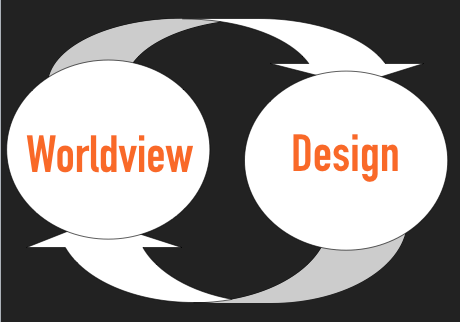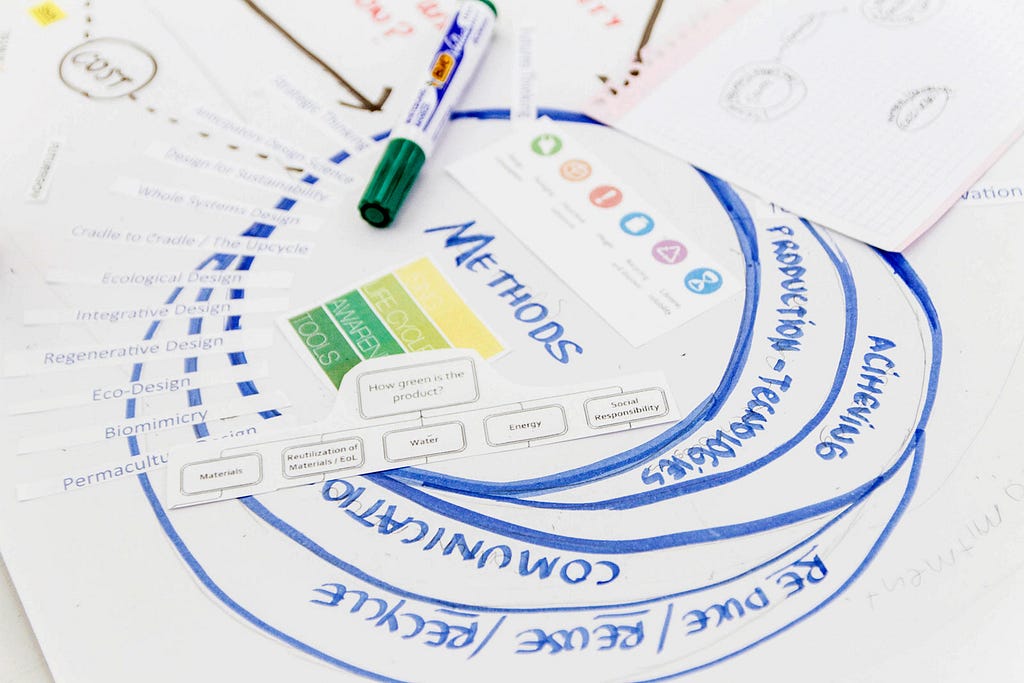Latest news about Bitcoin and all cryptocurrencies. Your daily crypto news habit.
All design is either consciously or unconsciously an expression of our theories about the world — our culturally dominant worldview. The shift from our current industrial growth society to a life-sustaining society of diverse regenerative cultures is fundamentally a shift in metadesign from the ‘narrative of separation’ to the ‘narrative of interbeing’.
Our worldview shapes our designs and our designs reinforce the worldview they were created in. That is one of the reasons why we cannot solve today’s problems within the worldview that created these problems in the first place. Past design solutions in the form of the products, services and systems around us influence and reinforce culturally dominant perspectives, processes, structures and behaviours, mostly without questioning them.

We are faced with an urgent need for systemic transformation in so many aspects of our lives. Whether you live in London, New York or a ‘slum’ settlement on the outskirts of one of the world’s rapidly growing mega-cities, people are calling for practical action and react with impatience if they perceive an approach to be ‘too theoretical’ rather than immediately practical and able to make a difference in the short term.
I have experienced this bias against ‘theory’ and toward ‘practical action’ in my work with local, regional and national government officials, in consultancy work with individual businesses or business clusters of different industries, and in work with grassroots initiatives like ecovillage or transition town projects, even in many educational initiatives.
In my opinion, the separation of theory and practice is another false dualism that we have to learn to overcome. By classifying initiatives as either theoretical or practical we are not paying attention to the fact that our view of the world is already deeply informed by theories about the world. In saying “we don’t have time to waste with theoretical considerations, let’s get practical and start implementing solutions”, what we are actually implying is that there is no need to question our perspective and explore alternative perspectives. We are jumping straight into action, offering answers to the questions and solutions to the problems at hand, without stepping back to make sure we are asking the right questions. We fail to explore whether the solutions we are aiming for are yet again solving one issue whilst causing harm and ugliness elsewhere.
Every practical act is deeply informed by a whole set of theories and perspectives. So the question is not whether we are practical or theoretical, but rather whether we are implementing practice in full awareness of the theoretical frameworks — the worldview and value systems — that inform our practice. Taking a design-based approach can help us to make our practice more theoretical and our theory more practical.
Design is at the nexus of theory and practice. Design is where art and science meet. In fact, it integrates information from almost all the disciplines into which we have separated human knowing and doing. Design is how we can acknowledge the influences of the past and give birth to visions of a different future.
We all live our lives within buildings, cities, transport systems, economic systems, land use patterns and food systems that have been designed for a particular purpose at a particular point in time. Yet design goes on designing. In many of the world’s cities, we move between buildings that were built decades and even centuries ago.
The transition towards diverse regenerative cultures, elegantly adapted to the uniqueness of the places they inhabit, will require us to re-examine how we have designed the world around us, our communities and institutions. We will have to combine the best of traditional, place-based wisdom, with the appropriate kind of modern technologies and innovation, and find creative ways to meet human needs, everywhere, within the limits of the natural cycles that sustain all life on Earth.
As Homo sapiens’s entry in any intergalactic design competition, industrial civilization would be tossed out at the qualifying round. It doesn’t fit. It won’t last. The scale is wrong. And even its apologists admit that it is not very pretty. The design failures of industrially / technologically driven societies are manifest in the loss of diversity of all kinds, destabilization of the earth’s biogeochemical cycles, pollution, soil erosion, ugliness, poverty, injustice, social decay, and economic instability.David W. Orr (1994: 104)
Asking deeper questions and shifting the gravity of our approach away from quick answers and one-size-fits-all solutions is an invitation to become more conscious of how particular worldviews and value systems influence design and behaviour. If we change how we think of ourselves and the stories we tell about who we are and about our relationship with wider natural processes, we are making an up-stream change that will affect why, how and what we design.
Equally, just because complex and interconnected problems are hard to solve, it will not help to divide these issues into smaller and seemingly easier-to-solve problems. Such an approach, at best, leads us to temporarily alleviate symptoms, while the underlying problems might actually get worse.
Over and over again we commit the same mistake in politics, business, health care and other fields. We tend to treat symptoms rather than causes, while continuing with the worldview and the behaviour patterns that caused the problems in the first place.
Good whole-systems designs can make us more aware of both what we think and what we do. They can invite choices and behaviour change. Design-led system transformation in all aspects of our lives has a very practical influence on the world we live in and the cultures we co-create.
[This is an excerpt of a subchapter from Designing Regenerative Cultures, published by Triarchy Press, 2016.]
 Image of student group work during a workshop I offered to the students of the Masters in Design and Innovation of the IED, Madrid (2015)
Image of student group work during a workshop I offered to the students of the Masters in Design and Innovation of the IED, Madrid (2015)
Design is where theory and practice meet was originally published in Hacker Noon on Medium, where people are continuing the conversation by highlighting and responding to this story.
Disclaimer
The views and opinions expressed in this article are solely those of the authors and do not reflect the views of Bitcoin Insider. Every investment and trading move involves risk - this is especially true for cryptocurrencies given their volatility. We strongly advise our readers to conduct their own research when making a decision.